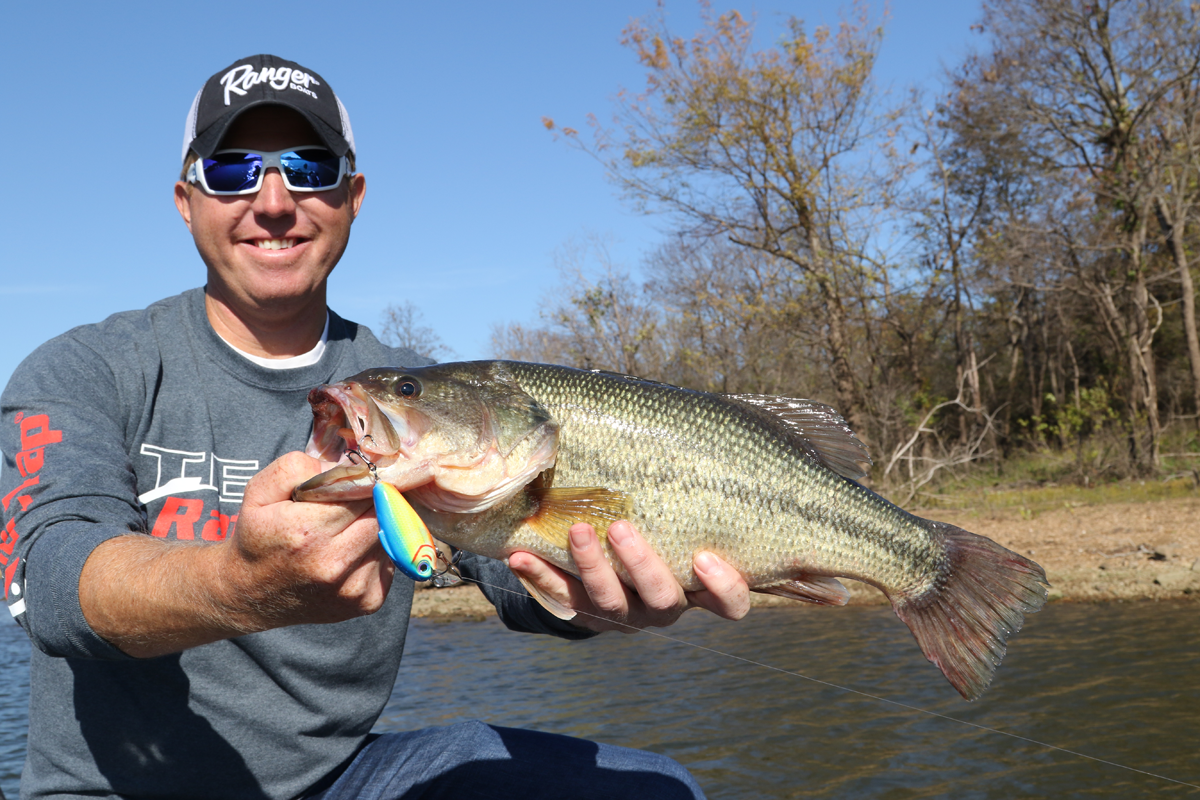
Spring rains, snow melt, a good summer tropical system—nature uses several methods of filling lakes and rivers, but such inflows always bring some level of mud.
Whether it’s a river system where the main artery scours the landscape and sends loads of sediment though its reservoir, or simply those hillside drains that funnel muddy water into the backs of pockets.
How Water Clarity Impacts Fishing
Muddy water decreases visibility and makes it harder for bass to spot baits. Decreased visibility also diminishes the likelihood of sight fishing.
Look for Ambush Points
When visibility decreases fish typically move shallow, as this enables them to feed more efficiently in smaller spaces. Think: Cornerback using the sideline to force a fleet-footed receiver out of bounds.
Notwithstanding muddy water’s concealing benefits, clarity is always a good thing. Vegetation filters the water, so look for areas thick with grass, reeds, etc. to clear up the quickest.
How to Choose the Right Lure for Poor Water Clarity
As rivers, streams, and creeks across the country begin to flood, we’re reminded that spring rains bring muddy water, which decreases visibility and makes bass fishing even more challenging. Turbid inflows prove particularly disruptive in lakes where fish are spawning, as the dirty-and typically colder-water will push fish off their beds.
Past the bedding season, murky water in any scenario demands attention and adjustment from anglers hoping to fool bass with artificials. It’s all about increasing the fish’s ability to detect your bait.
Switch to Bigger Lures
Large-profile baits provide a significant visual cue while displacing more water than smaller baits, allowing fish to “feel” something coming through the murk. Upsize your jig trailers, go with a larger worm on your Texas rig, or tie on a full-size topwater plug.
Reach for Louder Baits
Baits with internal rattles-be they crankbaits, jigs, topwaters, or frogs-give fish an audible beacon to follow. Bumping stumps or rocks with squarebills or crashing Texas-rigged baits into cover also keys strikes.
Choose Baits with Vibration
Lipless crankbaits earn their keep each spring, as their shuddering motion creates the bait-mimicking tremors to which bass respond. Likewise, Colorado blades produce the “thump” that draws fish to your spinnerbait.
Brighten Up Your Lure Color Choices
Dipping baits in chartreuse or orange dye enhances contrast, but when the water’s dirty don’t hesitate to get creative with colors. For example, Texas angler Dustin Grice modifies his spinnerbaits by adding chartreuse and white willow-leaf blades with a matching chartreuse/white skirt. That’s nothing new for brown bass, but Grice says the strategy also attracts the green ones.
“Most people think colored blades are just for smallmouths,” Grice says. “Smallmouths love them, but they also work for largemouth when the water’s dirty. I’ll throw (colored blades) to docks, points, and anywhere I find off-color water.”
Best Baits to Catch Muddy Water Bass
Simply put, you want to use baits that’ll garner attention with flash and/or vibration. Productive options include:
1. Spinnerbait
Big, flashy profile moves a lot of water. Make sure at least one of the blades is a thumping Colorado.
2. Crankbaits
Shallow divers, particularly squarebills shimmy through the murky water. Be sure to deflect off any cover you encounter.
3. Bladed Swim Jigs
Big on the visuals and vibes, this one’s especially productive with a large swimming tail like a Yamamoto Heart Tail Worm or a Gamble Big EZ.
4. Jigs
Once you locate a promising area (logs, laydown, etc.) with the “moving” baits, pick it apart with a dark colored flipping jig. Jigs with rattles are most productive and a big, active trailer is the way to go in muddy water.
5. Texas Rigs
Big worms, wide-bodied creature baits—anything with substantial mass and water-moving appendages will suffice. Similar to jig rattles, accenting these rigs with a bead between the hook and weight produces fish-calling clicking sounds.







